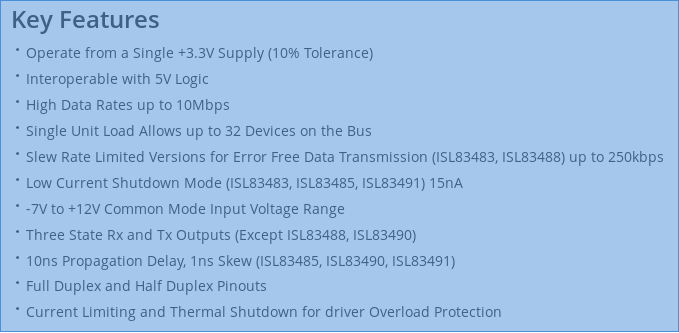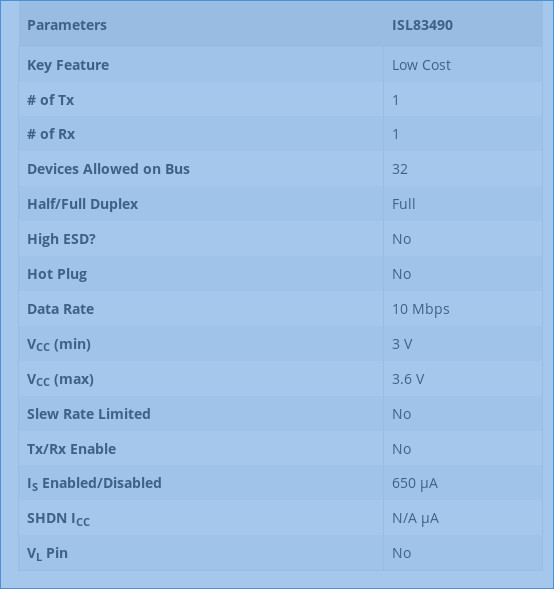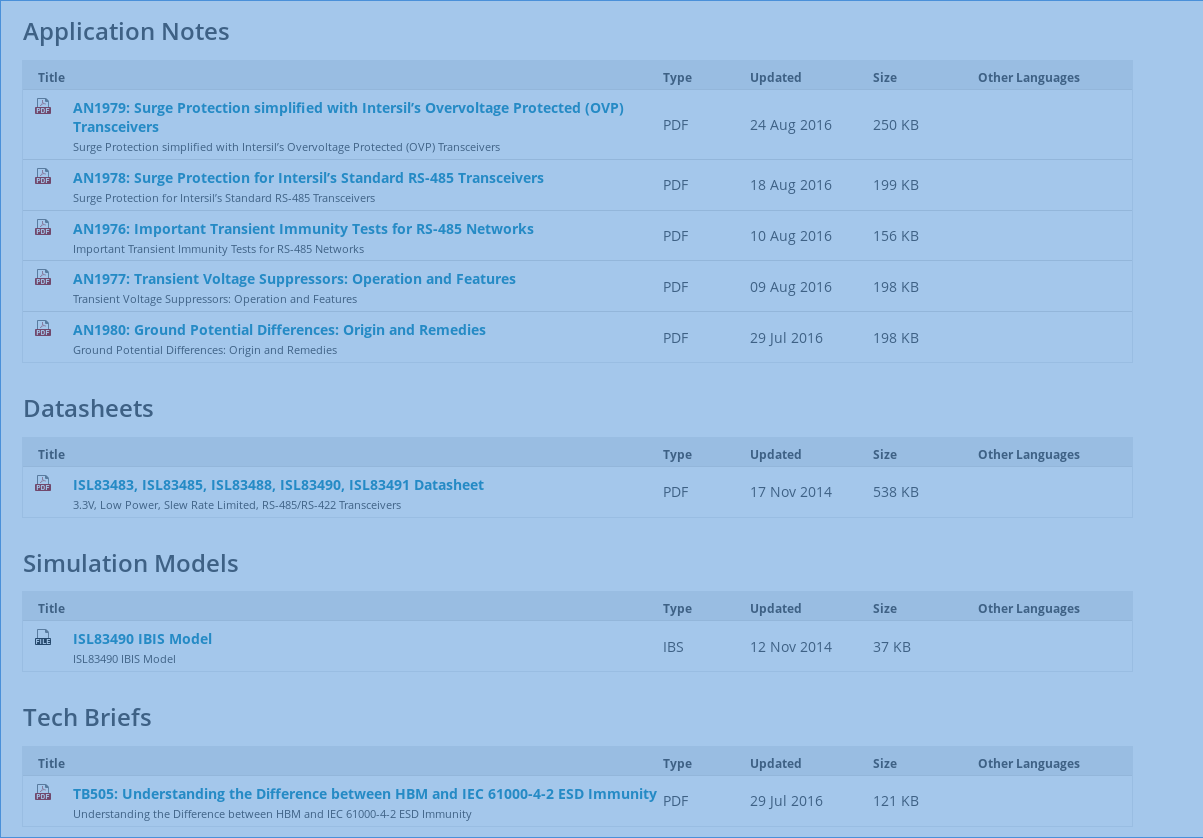Let's play, "What's my ESD rating"
Let's play, "What's my ESD rating"
So, differential transceivers are widely used in harsh environments, over long distances, to carry data with good integrity, and because of the distances implying outside cable runs, extremely good ESD protection.
For example, MCP2542 (http://ww1.microchip.com/downloads/en/DeviceDoc/20005514A.pdf) features 13kV protection on the business end of it, and Linear Technology has LTC 2875 (http://cds.linear.com/docs/en/datasheet/2875f.pdf) with no less than 25kV ESD protection.
By contrast yer average chip has at least 2kV or more commonly 4kV protection, just so it can make it through ESD succeptability testing without failing.
Chips involved in long external wiring need to especially take care about ESD, since the chance they are near to extreme events like lightning strikes increases.
Enter ISL83490
The cheapest differential transceivers you can get on Digikey are from Intersil, a semiconductor company with a long history I otherwise have a lot of respect for.
I was surprised to see no ESD rating for that chip in the datasheet: that is HIGHLY unusual...
http://www.intersil.com/content/dam/Intersil/documents/isl8/isl83483-85-88-90-91.pdf
...since everyone has to concern themselves with ESD protection on external cable runs. But look, if you go to the product page, it completely fails to discuss the ESD protection level provided by the chip
www.intersil.com/en/products/interface/serial-interface/rs-485-rs-422/ISL83490.html#overview

Nor is it mentioned in the "description"

but has a ton of generic ESD protection app notes!

In fact EVERY app note except arguably one is related to ESD protection.
So, I registered with Intersil support and asked them: what is the ESD protection level of that chip? I got an answer quickly, but it was
ESD In Volt HBM 1000
ESD In Volt CDM 1000
ESD In Volt MM 50
These are barely (possibly, "not even") in the 'sufficient self defense against guy on a carpet' league, let alone "run RS485 between buildings on a dark and stormy night" or even "pass immunity testing" leagues.
Crappier than 74HC
I mean if you buy a venerable 74HC chip from TI you get double that
ESD occurs when a buildup of static charges on one surface arcs through a dielectric to another surface that has the opposite
charge. If this discharge current flows through an integrated circuit, the high currents can damage delicate devices on the chi
p.
The protection circuits designed by Texas Instruments (TI) operate by shunting any excessive current safely around the
sensitive circuitry on the chip. This provides ESD immunity on inputs and outputs that exceeds MIL-STD-883B, Method 3015
requirements for ESD protection (2000 V, 1500
Ω, and 100 pF).
www.ti.com/lit/an/scla007a/scla007a.pdf
Those chips are not even designed for dangerous long cable runs as this one is.
What's the point of hiding that figure in the datasheet and making me ask, and then this passive-aggressive "ESD ESD ESD" in the App Notes? This is a terrible way to deal with it.
Trade-offs
It's not in itself illegitimate to have a very cheap, but relatively unprotected chip that needs external transzorbs to go out by itself at night. If the designer is properly informed, and given golden external protection circuit examples, he can reasonably and safely decide that is a good way to spend his money.
But if you hide the miserable truth in this fog of ambiguous app notes, well, THAT SUCKS DONKEY BALLS.
What we learned this time
Datasheets are magical documents where what is not said, can be more important that what is said
You must use your skill and judgment to assess what was not said in the datasheet, or you will quite quickly be in shit creek
